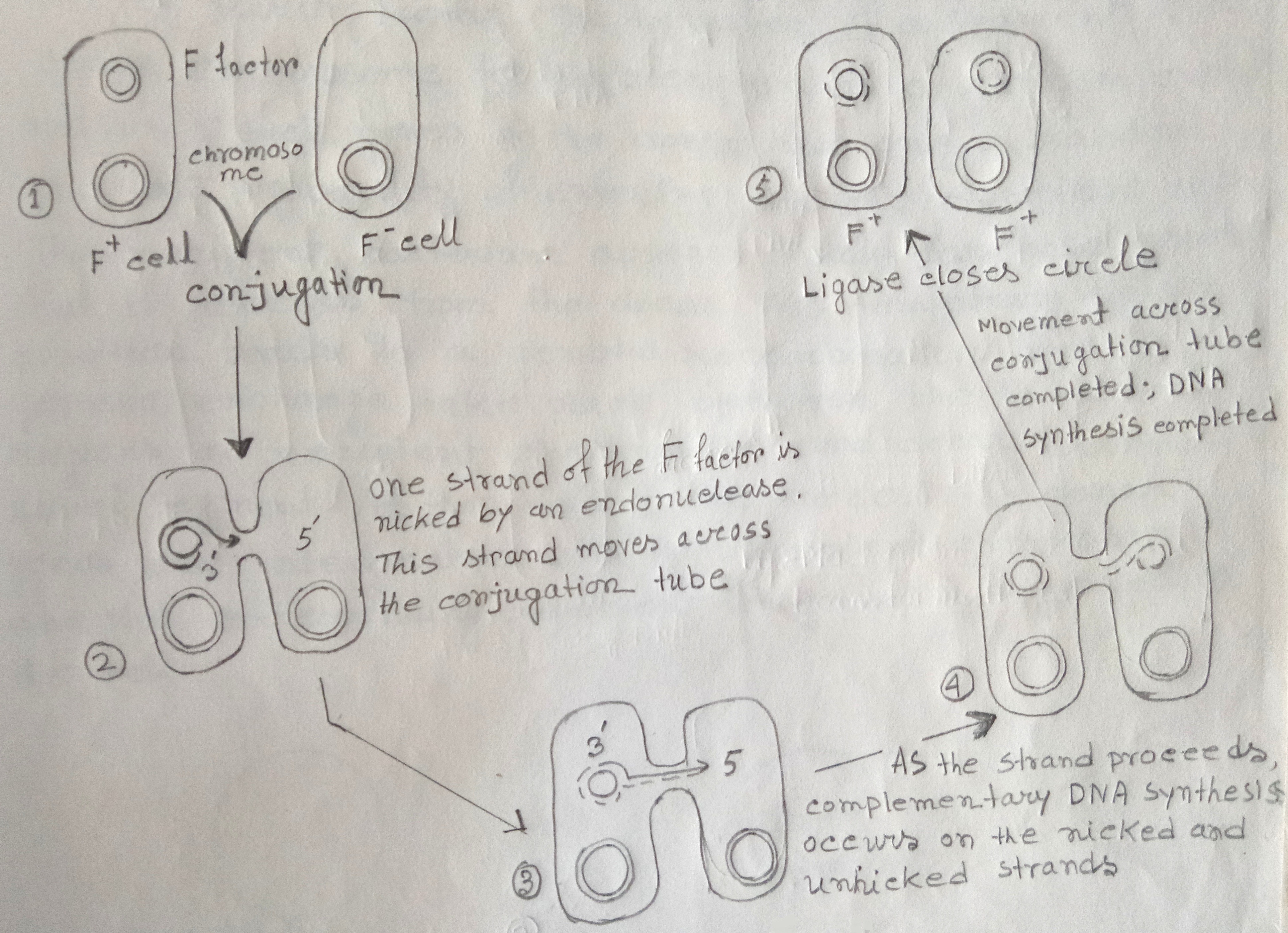Explain with clear & labelled diagrams the ways in which genes can be transferred in bacteria
Three processes in bacteria can transfer the genetic material from one cell to another:
(i) Transformation (ii) Conjugation (iii) Transduction
(i) Transformation
In molecular biology, the transformation is the genetic alteration of a cell resulting from the direct uptake, incorporation & expression of exogenous genetic material (exogenous DNA) from its surroundings & taken up through the cell membranes. Transformation occurs naturally in some species of bacteria, but it can also be affected by artificial means in other cells. For the transformation to happen, bacteria must be in a state of competence, which might occur as a time-limited response to environmental conditions such as starvation & cell density.
Transformation is one of the processes by which exogenous genetic material may be introduced into a bacterial cell, the other two beings conjugation & transduction. 'Transformation' may also be used to describe the insertion of new genetic material into nonbacterial cells, including animal & plant cells, however, because, transformation has a special meaning in relation to animal cells, indicating progression to a cancerous state, the term should be avoided for animal cells when describing introduction of exogenous genetic material. The introduction of foreign DNA into eukaryotic cells is often called 'transfection'.
During the process of transformation, the two strands of a double-stranded DNA that enter into the bacterium, one strand is digested by a nuclease that is contained in the bacterial cell membrane. The other single strand in some way is protected from the nuclease attack. The single DNA strand, once inside the cell, causes the local unwinding of the recipient DNA & invades it.

Fig: Mechanism of bacterial transformation
(ii) Conjugation
Conjugation could be defined as the temporary fusion of two single called organisms for the transfer of genetic information from one to another.
In conjugation, there is a physical contact between two bacteria & the unidirectional flow of genetic material occurs through the conjugation canal. Bacteria with fertility factor known as F act as donors during conjugation & transfer the genetic material to F- bacteria. F factor is shown to be a circular self-replicating plasmid containing 6*10^4 nucleotides. F plasmids are capable of replicating independently of the main chromosome. The genes in plasmid DNA code for fibrous pili proteins.Whenever a single cell of F+ type is present in a pop[ulation of F- cells, within a matter of few hours all the F- are converted to F+ cells.

Fig: The transfer of FDNA to F- cell
During the process of bacterial conjugation, after the formation of a conjugation tube between F+ & F- cells, a copy of the plasmid DNA moves to F- cell converting it to F+. At the end of conjugation, every recipient cell becomes a F+ cell thereby showing the transfer of F factor through the conjugation tube during each mating.
style="display:block; text-align:center;"
data-ad-format="fluid"
data-ad-layout="in-article"
data-ad-client="ca-pub-4777731237847953"
data-ad-slot="1457180158"></ins>
However, in only 1*10^-7 cell there is a transfer of any part of the donor's chromosome along with the transfer of fertility factor. The transfer of a segment of a donor chromosome to the recipient is a random event & as such genes of the donor have only a random & low probability of entering into the recipient cell. The recipient bacterium appears diploid for those genes that it receives from the donor. This temporary diploid condition leads to a genetic recombination & a genetic exchange take place between the homologous regions of recipient chromosome & donor chromosomal segment. At the end of this process, the donor genes are integrated into the recipient chromosome & the corresponding recipient fragment is degraded in the cell.

Fig: Recombination between donor chromosomal segment & recipient chromosome
(iii) Transduction
Transduction is another process in which the transfer of genetic material from one bacterium to another is mediated by bacteriophage. transduction is regarded as a generalized one when every portion of the donor DNA has an equal probability of being transferred & any transduction particle has 1/100 to 1/50 portion of donor chromosome. Specialized or restricted transduction limits the transfer of only certain genes through bacteriophage.